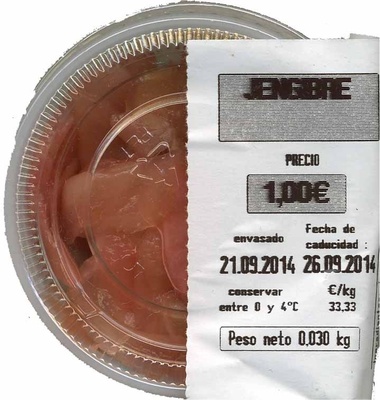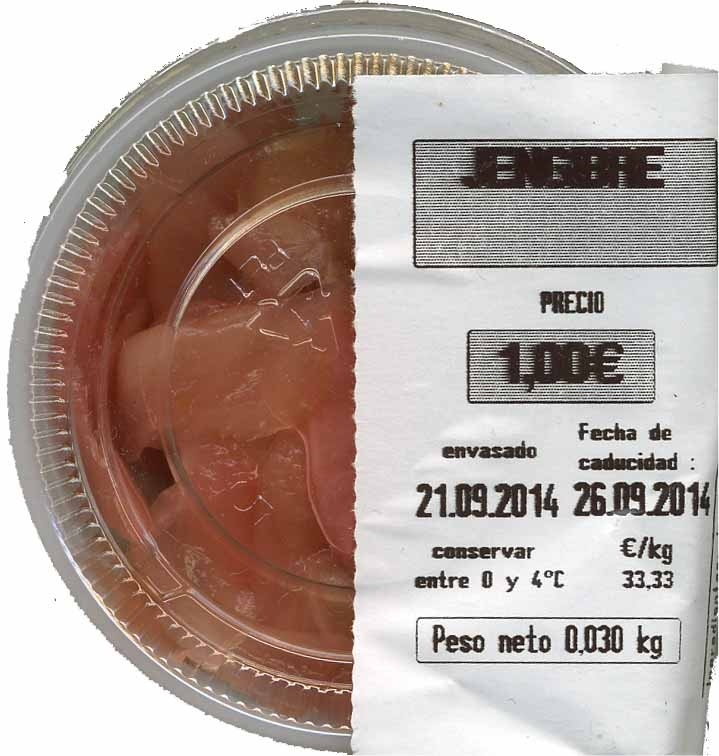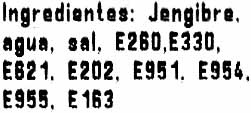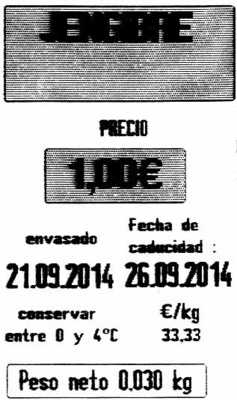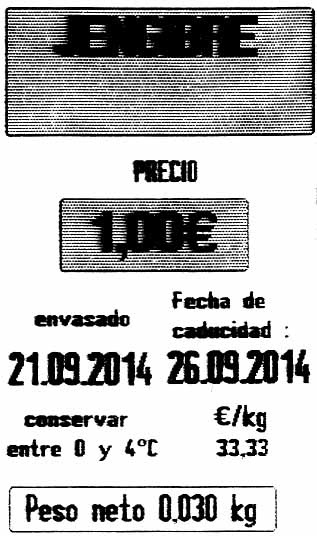Jengibre encurtido - - 30 g
This product page is not complete. You can help to complete it by editing it and adding more data from the photos we have, or by taking more photos using the app for Android or iPhone/iPad. Thank you!
×
Barcode: 8436539681243 (EAN / EAN-13)
Common name: Jengibre encurtido
Quantity: 30 g
Packaging: Refrigerated, es:Tarrina de plástico
Categories: Plant-based foods and beverages, Plant-based foods, Condiments, Pickles, Plant-based pickles, Spices, Ginger, Gari, Groceries
Labels, certifications, awards: Vegetarian, Vegan
Manufacturing or processing places: [ENVASADOR], [Múltiples sitios], España
Traceability code: ENVASADOR:, KELLYDELI S.L.
Link to the product page on the official site of the producer: http://www.sushidaily.com/nuestros-produ...
Stores: Carrefour
Countries where sold: Spain
